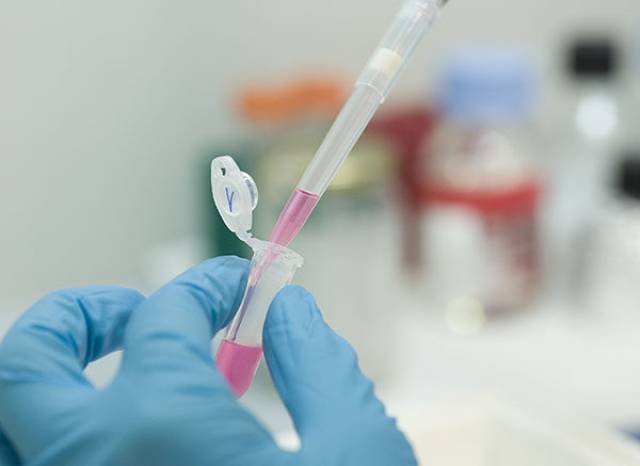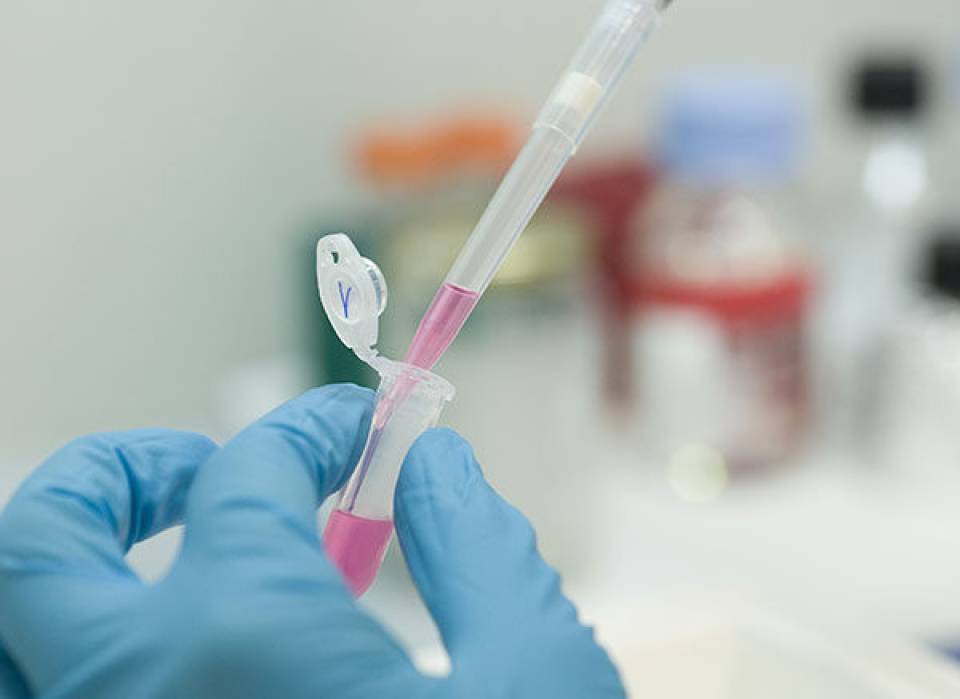
Hospital Clínic of Barcelona and the Vall d'Hebron Barcelona Hospital Campus have participated in an international study that demonstrates the efficacy of a new pharmacological treatment for transthyretin amyloidosis, the most common form of familial amyloidosis. Josep M. Campistol, nephrologist and CEO at Hospital Clínic, and Josep Gámez, neurologist at the Vall d'Hebron Barcelona Hospital Campus, are co-authors of the study published in the New England Journal of Medicine (NEJM).
Hereditary transthyretin amyloidosis (TTR) is the most common form of familial amyloidosis. It is a rare systemic disease caused by mutations in the gene encoding for transthyretin (a protein) and affects about 50,000 people worldwide. The average life expectancy, untreated, from symptom onset is 3 to 15 years, and the presence of cardiomyopathies is associated with a worse prognosis.
The liver is the main source of the TTR protein and, in this type of amyloidosis, both normal and altered protein accumulate in the form of deposits of amyloid substance in peripheral nerves, heart, kidney and gastrointestinal tract. Thus, different forms of the disease appear, such as polyneuropathy (involvement of the brain) or cardiomyopathy (involvement of the myocardium). "Until now, current treatment options included liver transplantation or the use of drugs to stabilize the circulating protein and thus prevent the formation of deposits, but in many patients the disease continues to progress," explains Josep. M. Campistol.
A new pharmacological treatment to reduce TTR in blood
In the study published in NEJM researchers evaluated the efficacy and safety of Inotersen, a second generation antisense oligonucleotide (ASO) inhibitor. It is a drug that inhibits the production of TTR in the liver by binding to the TTR microRNA and reducing the production of both normal and pathological TTR protein. It is easily to administer subcutaneously once a week. Due to the half-life of the drug, Inotersen provides a constant reduction of TTR over time.
A total of 172 patients with hereditary transthyretin amyloidosis with polyneuropathy, in the presence or absence of cardiac involvement, have participated in this international phase III study. The results show that treatment improves the neurological disease and the quality of life of the participants, regardless of the disease stage or the presence of cardiomyopathy. Thrombocytopenia (decrease in platelet count) and glomerulonephritis (inflammation the glomeruli, the small filters in the kidney), which appeared in 3% of patients in each case, were the most frequent adverse events and were managed with enhanced monitoring.
"Inotersen is a gene therapy that allows subcutaneous administration of oligonucleotides that favor the degradation of the TTR protein microRNA, thus reducing TTR liver production," explains Josep Gàmez, who is also coordinator at Vall d'Hebron of the CSUR in Rare Neuromuscular Diseases and the European Reference Network on Neuromuscular Diseases (EURO ERN-NMD).
Gene therapy blocks the production of TTR protein
In a second article also published in the NEJM, the efficacy and safety profile of the Patisiran has been studied. It is an RNA interference (RNAi) directed to the liver to specifically block the production of TTR. This type of drugs is based on a natural process of the cells to silence genes and, in this specific case, the RNAi helps to eliminate the circulating protein and reduce the deposits of amyloid in peripheral tissues. Josep M. Campistol and Juan Buades, internal medicine specialist and coordinator of the multidisciplinary group on hereditary transthyretin amyloidosis at the University Hospital Son Llatzer in Mallorca, have participated in the study.
A total of 225 patients with transthyretin amyloidosis have participated in this phase III study and the results show that this treatment improves the diverse clinical manifestations of the disease, as well as the quality of life, the nutritional status and the autonomy of the patients.
"Both pharmacological treatment and gene therapy slow the progression of the disease and improve the quality of life of patients, and these improvements are independent of the stage of the disease” says Josep M. Campistol. "Both studies show the potential of two new drugs for an orphan disease, for which until now there were no other treatment options. The available therapeutic arsenal is broadened now and it will change the clinical practice in this type of amyloidosis", he concludes.
Article references:
Inotersen Treatment for Patients with Hereditary Transthyretin Amyloidosis.
Benson MD, Waddington-Cruz M, Berk JL, Polydefkis M, Dyck PJ, Wang AK, Planté-Bordeneuve V, Barroso FA, Merlini G, Obici L, Scheinberg M, Brannagan TH 3rd, Litchy WJ, Whelan C, Drachman BM, Adams D, Heitner SB, Conceição I, Schmidt HH, Vita G, Campistol JM, Gamez J, Gorevic PD, Gane E, Shah AM, Solomon SD, Monia BP, Hughes SG, Kwoh TJ, McEvoy BW, Jung SW, Baker BF, Ackermann EJ, Gertz MA, Coelho T.
N Engl J Med. 2018 Jul 5;379(1):22-31. doi: 10.1056/NEJMoa1716793.
Patisiran, an RNAi Therapeutic, for Hereditary Transthyretin Amyloidosis.
Adams D, Gonzalez-Duarte A, O'Riordan WD, Yang CC, Ueda M, Kristen AV, Tournev I, Schmidt HH, Coelho T, Berk JL, Lin KP, Vita G, Attarian S, Planté-Bordeneuve V, Mezei MM, Campistol JM, Buades J, Brannagan TH 3rd, Kim BJ, Oh J, Parman Y, Sekijima Y, Hawkins PN, Solomon SD, Polydefkis M, Dyck PJ, Gandhi PJ, Goyal S, Chen J, Strahs AL, Nochur SV, Sweetser MT, Garg PP, Vaishnaw AK, Gollob JA, Suhr OB.
N Engl J Med. 2018 Jul 5;379(1):11-21. doi: 10.1056/NEJMoa1716153.

